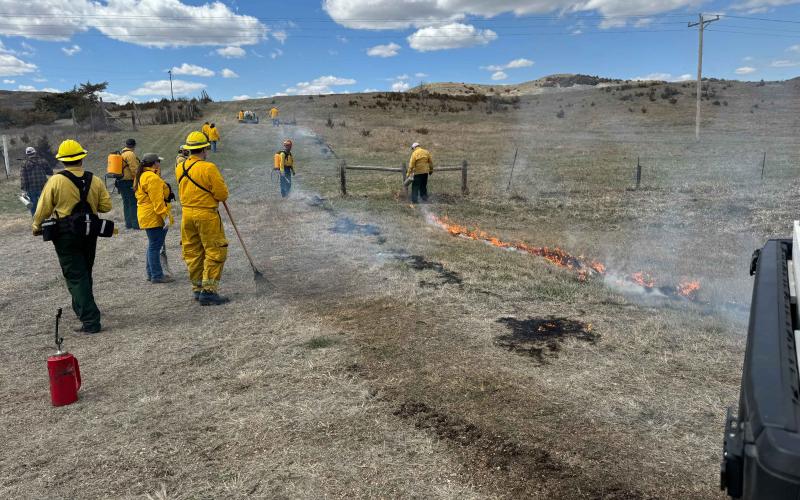Originally written by James Doyle, former SDSU Extension Natural Resource Management Field Specialist.
Although most people associate wildfire season with the hot, dry peak of summer, the recent Cottonwood fire provides a strong reminder of the importance of fire safety throughout the year. This fire consumed over 40,000 acres of grassland, causing significant damage to livestock, structures, and other property in the process.
The moisture and cooler temperatures of fall make it easy to become lax about fire danger, however, conditions can still lead to easy ignition and rapid growth of wildfires. Grass and other vegetation that has accumulated over the growing season can provide a significant fuel source for fall fires as it dries out and enters dormancy.
Outdoor Activity Safety
Increased activity, such as fall roundup and hunting, on pastures and rangeland can also lead to increased chances of sparking a fire. Producers, hunters, and anyone else who is active outdoors can take some simple steps to minimize the danger of starting a wildfire. Some important points to keep in mind include:
- Avoid parking vehicles, ATVs, or UTVs in tall grass.
- Watch for accumulation of tumbleweeds or other dry vegetation under vehicles and equipment.
- Keep a fire extinguisher in vehicles and equipment.
- Do not discard cigarette butts outdoors.
- Ensure all campfires are completely extinguished.
- Do not burn trash or debris on warm, windy days.
- Use a trash incinerator with a spark arrestor.
Defensible Space
Similarly, people who live in wildfire prone areas are encouraged to follow the principles of “defensible space.” Defensible space relates to fire danger mitigation around homes and other structures through landscaping and other tools. This is based on managing fire risks in different zones around homes or other vulnerable areas. Some concepts of defensible space that might fit in the context of a rural South Dakota home include:
- Maintain space between trees or shrubs and houses or other buildings.
- Keep gutters and roofs clean and free of flammable debris.
- Landscape with fire-resistant plants.
- Keep grass mowed around structures, haystacks, and machinery.
- Avoid storing hay, fuel, or other combustible materials near buildings.
In Summary
Prescribed fire can bring many benefits to the grassland ecosystem, but unplanned and uncontrolled wildfires can have devastating impacts to local residents. By following some basic fire safety tips, you can help do your part to ensure the safety of South Dakota’s natural resources and the people who depend on them while working or recreating outdoors this fall. Visit the South Dakota Wildland Fire website for more information on fire prevention.


